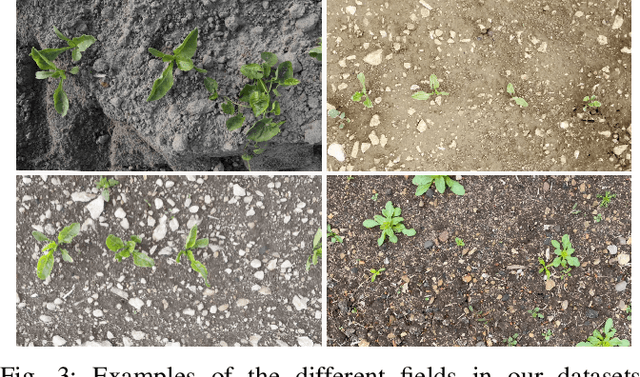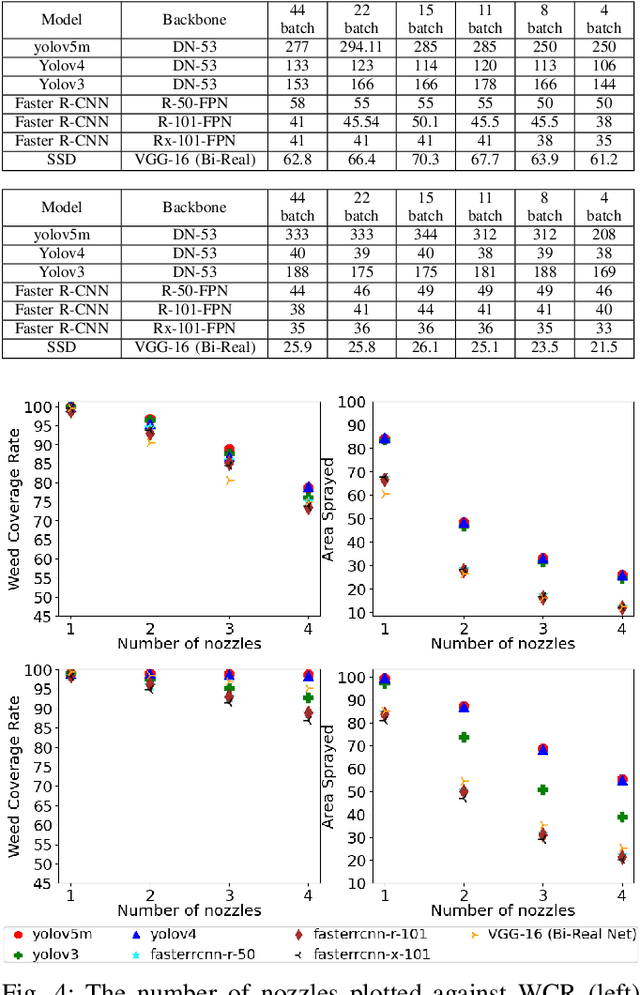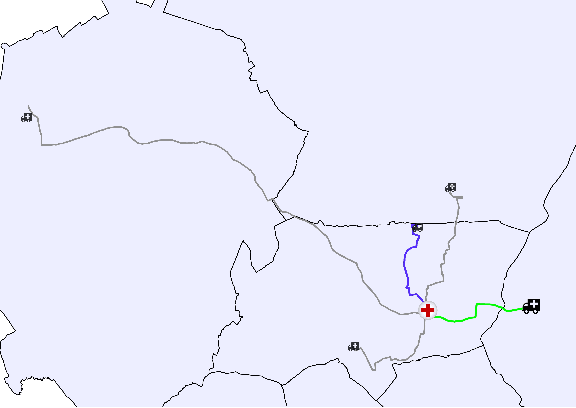Elizabeth I Sklar
Towards practical object detection for weed spraying in precision agriculture
Sep 22, 2021



Abstract:The evolution of smaller, faster processors and cheaper digital storage mechanisms across the last 4-5 decades has vastly increased the opportunity to integrate intelligent technologies in a wide range of practical environments to address a broad spectrum of tasks. One exciting application domain for such technologies is precision agriculture, where the ability to integrate on-board machine vision with data-driven actuation means that farmers can make decisions about crop care and harvesting at the level of the individual plant rather than the whole field. This makes sense both economically and environmentally. However, the key driver for this capability is fast and robust machine vision -- typically driven by machine learning (ML) solutions and dependent on accurate modelling. One critical challenge is that the bulk of ML-based vision research considers only metrics that evaluate the accuracy of object detection and do not assess practical factors. This paper introduces three metrics that highlight different aspects relevant for real-world deployment of precision weeding and demonstrates their utility through experimental results.
The Application of Market-based Multi-Robot Task Allocation to Ambulance Dispatch
Mar 11, 2020



Abstract:Multi-Robot Task Allocation (MRTA) is the problem of distributing a set of tasks to a team of robots with the objective of optimising some criteria, such as minimising the amount of time or energy spent to complete all the tasks or maximising the efficiency of the team's joint activity. The exploration of MRTA methods is typically restricted to laboratory and field experimentation. There are few existing real-world models in which teams of autonomous mobile robots are deployed "in the wild", e.g., in industrial settings. In the work presented here, a market-based MRTA approach is applied to the problem of ambulance dispatch, where ambulances are allocated in respond to patients' calls for help. Ambulances and robots are limited (and perhaps scarce), specialised mobile resources; incidents and tasks represent time-sensitive, specific, potentially unlimited, precisely-located demands for the services which the resources provide. Historical data from the London Ambulance Service describing a set of more than 1 million (anonymised) incidents are used as the basis for evaluating the predicted performance of the market-based approach versus the current, largely manual, method of allocating ambulances to incidents. Experimental results show statistically significant improvement in response times when using the market-based approach.
 Add to Chrome
Add to Chrome Add to Firefox
Add to Firefox Add to Edge
Add to Edge